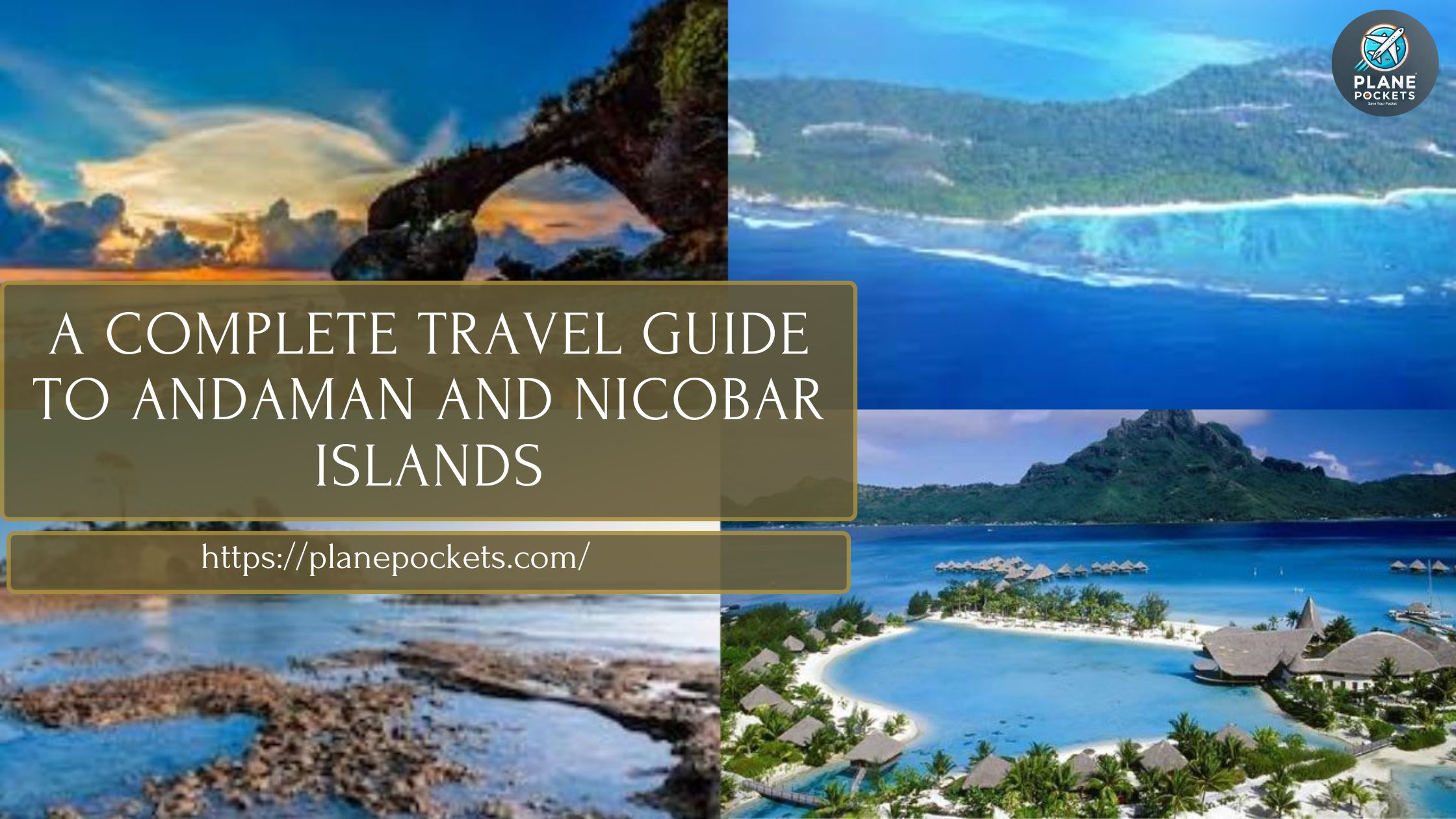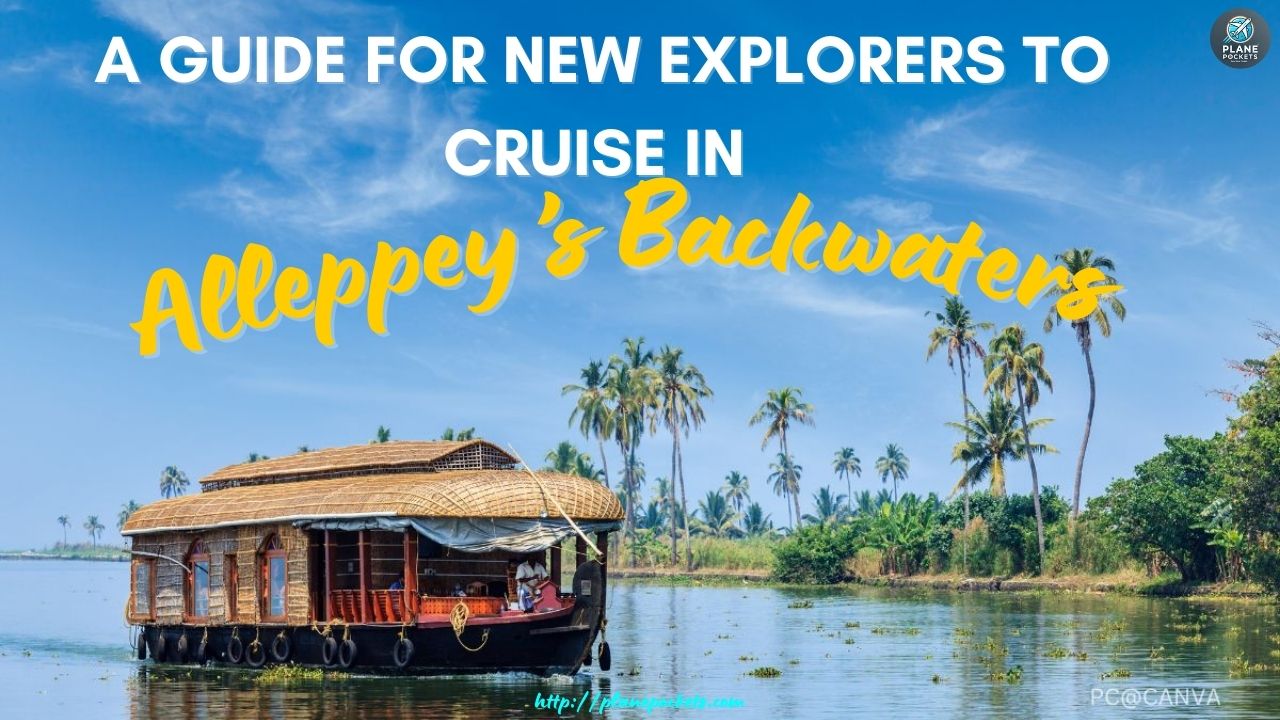When planning a trip to the United States, understanding the types of USA visas is the first and most crucial step. A visa is a license you need to visit a foreign country that confirms the purpose of your trip to the United States – whether it is for education, work, tourism, or immigration.
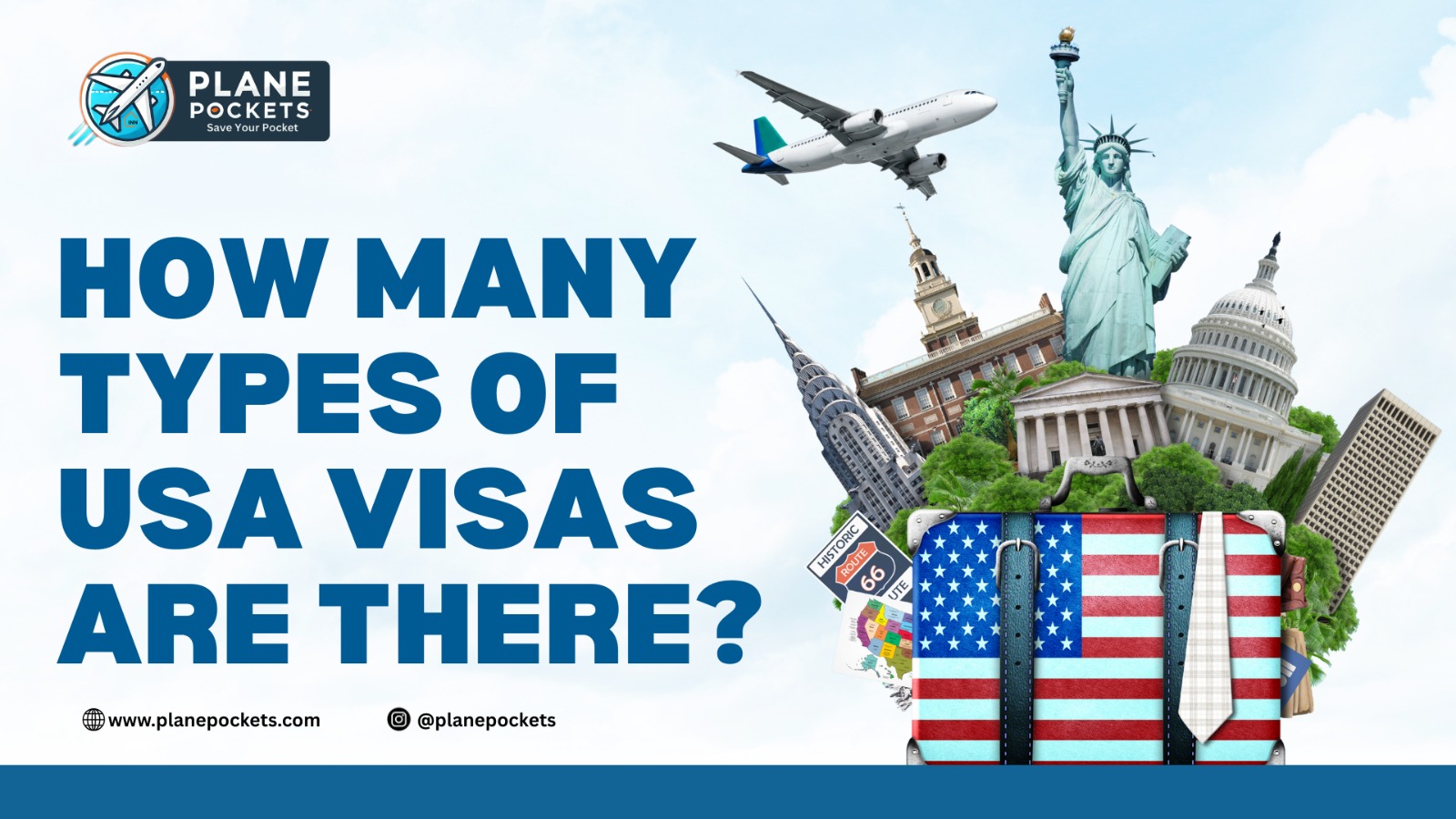
For many, the US is more than just a destination; it represents the American Dream – a land of opportunities, cultural diversity, and growth. People across the world aspire to visit or settle here for quality education, better job opportunities, and exposure to a different lifestyle.
Individuals from other countries visit the US, reflecting the strong bond between nations. There are many different visa categories offered by the US, which often confuse visitors when selecting the right visa for their purpose. This guide will walk you through the types of US visas to help you choose the right category.
From student visas to work permits and immigrant visas, the Types of Visas offered by the US cater to every need and aspiration. Let’s explore the different visa categories in detail. First, you need to understand what a USA Visa is.
What is a U.S. Visa?
A U.S. visa a type of document required for foreign citizens who wishing to enter or travel to United States. This Visa is stamped or placed inside the traveler’s passport, which is an official travel document issued by their country of citizenship. There are mainly two types of Visa offered by US for visitors which are mentioned below.
What are the Types of Visas offered by US?
The type of Visa is determined by US immigration law and depends on the purpose of your visit. US visas are broadly divided into two main categories:
Non-immigrant Visas: Non immigrant visas are issued to those individuals who intend to visit United States for a temporary period to fulfill specific purposes such as tourism, business travel, specialized employment, or education. Applicants must convince the consular officer that they plan to leave the United States once their short stay is completed.
Immigrant Visas: An immigrant visa is a type of visa that permits a person to relocate to the United States for permanent residence. It is generally granted to individuals who wish to work, reunite with family, or begin a new life abroad. This visa allows holders to live, work, and later apply for permanent residency or citizenship.
Different Types of USA Visas
Types of Non-Immigrant USA Visas
| Visa Type | Purpose |
| A Visa | For diplomats and foreign government officials |
| B-1 Visa | For visitors like tourists, business travelers |
| C Visa | Transit visa for crew members of a ship or an airplane, travelers to the UN headquarters in New York |
| D Visa | For crewmembers of a ship or an airplane |
| E-1 Visa | For treaty investors |
| E-2 Visa | For treaty traders |
| F Visa | For trainees, students, or participants of language courses |
| G Visa | For foreign government officials who are members of international organizations (e.g. UN) |
| H-1B Visa | For temporary workers |
| H-2B Visa | For temporary agricultural workers |
| I Visa | For journalists and media representatives |
| J Visa | For individuals participating in exchange programs (students, au-pairs, trainees, and others) |
| K-1 Visa | For fiancé(e)s of U.S. citizens |
| K-3 Visa | For spouses of U.S. citizens |
| L-1 Visa | For intracompany transferees (executives, managers, workers with specialized knowledge |
| M Visa | For trainees or students in non-academic vocational programs |
| N Visa | For parents and children of certain Greencard holders |
| O Visa | For people with exceptional talent or achievement like athletes, artists, scientists, and so on. |
| P Visa | For individuals with extraordinary abilities who perform together (orchestra members, circus artists, athletes) |
| Q Visa | For participants in cultural exchange programs |
| R Visa | For religious workers of a recognized religious community |
| S Visa | For individuals who have knowledge of criminal activities in organisations or companies |
| T Visa | For victims of human trafficking |
| U Visa | For victims who suffered mental or physical abuse |
| V Visa | For spouses and children of Greencard holders |
Types of Immigrant Visas
| Visa Type | Purpose |
| IR1/CR1 | Spouse of a U.S. Citizen |
| IR2 | Children’s green card |
| IR3 | Intercountry Adoption of Orphan Children by U.S. Citizens |
| IR4 | Children adopted in the USA |
| IR5 | Parents of US citizens over the age of 21 |
| F3 | Married children of US citizens over the age of 21 |
| F4 | Siblings of US citizens |
| F2A, F2B | Spouses, children and adult children of US citizens/permanent residents |
| EB-1 | Employment first preference for priority workers |
| EB-2 | Employment second preference for professionals holding advanced degrees and persons of exceptional ability |
| EB-3 | Employment third preference for skilled workers, professionals and unskilled workers |
| EB-4 | Employment fourth preference for certain special immigrants |
| EB-5 | Employment fifth preference for Immigrant investors |
| SD, SR | Religious Workers |
| SI | Iraqi and Afghan Translators/Interpreters |
| SQ | Iraqis/Afghans Who Worked for/on Behalf of the U.S. Government |
| DV | Diversity Immigrant Visa |
| SB | Returning Resident |
Popular Visa Types for Going to the USA
1. Tourist or Business Visa
If you are planning to visit the United States for tourism or business purposes, you will typically be issued a combined visa. Applicants must demonstrate to the consular officer that their stay in the U.S. is temporary and that they have sufficient funds to cover travel expenses.
In addition, the embassy requires proof of residence outside the U.S., ensuring that applicants have strong ties to their home country. It is important to note that holders of this visa are not allowed to take up employment in the United States.
A B-1 USA visa is issued for individuals traveling to the US for business-related activities such as meetings, conferences, educational seminars, settling an estate, or negotiating contracts.
A B-2 visa is meant for tourism, visiting relatives or friends, and medical treatment.
2. Work Visa
The US offers a Work Visa depending on the kind of employment you will undertake in the country. The work visa categories available for travelers are as follows:
H-1 B Visa: This visa is granted to individuals holding at least a bachelor’s degree. The USCIS determines whether the applicant is qualified in a specialized occupation to perform the required services.
H-3 Visa: This type of visa is designed for traineeships, allowing individuals to come to the US for training in a specific field from an employer for up to two years. While participants may receive payment for the training program, the visa cannot be used for permanent employment.
H-4 Visa: This visa is available to spouses and unmarried children of H visa holders. H-4 visa holders may be permitted to work in the U.S. subject to certain conditions.
L-1: This visa is designed for intra-company transferees. Employees, managers, or executives of an international company are eligible if they are temporarily transferred to the parent branch or a subsidiary of the company in the U.S.
L-2: This visa is for the dependents of valid L visa holders. Spouse and unmarried children under 21 can apply for an L-2 visa to enter the U.S. Spouses may apply for work authorization by submitting Form I-176, but children on an L-2 visa are not eligible to work in the U.S.
O Visa: This visa is offered to individuals with extraordinary ability in fields such as science, education, arts, business, athletics, or the motion picture and television industry.
The P visa is available for athletes, artists, entertainers, and essential support staff entering the US to perform.
The Q type visa is granted to individuals participating in an international cultural exchange program. It allows training, employment, and the opportunity to share the history, culture, and traditions of their home country.
The USCIS reviews petitions for H, L, O, P, and Q visas. Approval of Form I-129 is required before submitting a work visa application at the consulate. Once approved, your employer will receive Form I-797 which confirms the petition’s approval. You must present both Form I-129 and Form I-797 to the Consulate during the interview.
3. Student Visa
You can apply for a student visa up to 120 days before the commencement date mentioned on your Form I-20:
F-1 Visa: Designed for students who wish to enroll in academic programs in US-approved Universities. This visa also applies to those who want to enroll in English language learning programs. Students applying to public secondary schools in the US are also eligible for the F-1 visa, provided they meet all requirements including nationality (e.g. Indian citizens).
4. Exchange Visitor Visa
An exchange visitor visa is provided to applicants who are travelling to the US to participate in an exchange program. Before applying for an exchange visitor visa, applicants need approval from the authorized program sponsor. An exchange visitor will be given a J visa.
The main purpose of exchange visitor visas is to promote the exchange of knowledge and skills in the following fields:
- Teachers
- Academic Researchers
- Professors
- Research Scholars
- Professional Trainees
- Travel & Tourism
- Consulting
- Research Programs
5. Ship Crew or Transit Visa
The Transit C visa is designed for citizens of foreign countries who wants to travel to another country through the United States. If you wish to visit family, friends while staying in the US, check your layover privileges and consider applying for a B-2 visa instead.
The Crew D Visa is intended for crew members working on a sea vessel or aircraft. Most crew members apply for C-1 or D visas, which combines a transit visa with a ship crew. A crew member can also apply for a B-1 visa if their job requires them to work on board a vessel within the outer continental shelf.
6. Religious Worker Visa
An R-1 visa is required for a religious worker who want to travel to the US to carry out religious activities.
7. Personal & Domestic Employee Visa
Domestic Employee visas are offered to personal and domestic servants who accompany their employer to the U.S. These personal or domestic servants need to apply for a B-1 visa.
The U.S. Consulate issues an A-3 or a G-5 visa to domestic servants of foreign diplomat or government officials. Below is the list of domestic servants who are eligible for a domestic employee visa.
- Butlers
- Cooks
- Chauffeurs
- Footmen
- Gardeners
- Housemaids
- Mother’s Helpers
- Nannies
- Paid Companions
- Valets
8. Media & Journalist Visa
The I visa (Media & Journalist visa) is granted to nonimmigrants who have a home office outside the United States and wish to stay in the United States temporarily. This visa is available if the purpose of the visit to the United States is any of the following:
- Attending a Conference
- Meeting
- Guest Lecture
- Cover Academic activites
- Purchasing media equipments
- Vacation
How to Apply for USA Visa?
Applying for US visa requires to complete several steps, including submitting the visa application and arranging an in-person interview at a US Embassy or Consulate. Below is a step-by-step guide on how to apply for a US visa.
Step 1: Before applying for the US visa, you need to determine the type of visa you require. The three common visa applications include B-1/B-2 visitor visa, F-1 student visa, and H-1B work visa.
Step 2: For a tourism visa, apply for a non-immigrant visa and fill out the DS-160 Form.

Step 3: Visit to the Consular Electronic Application Center (CEAC) website.
Step 4: On the CEAC website, select the location where you will be applying for the visa.
Step 5: The, enter the Captcha Code and click on the “Start an Application” button.

Step 6: Once you click on the button, you will be redirected to the Computer fraud & Abuse Act Notice guideline, which you must read before applying for the US visa.
Step 7: After reading the notice, check the ‘I Agree’ button. Remember to note your appplication ID which is very important as it is required if you need to retrieve your application later.
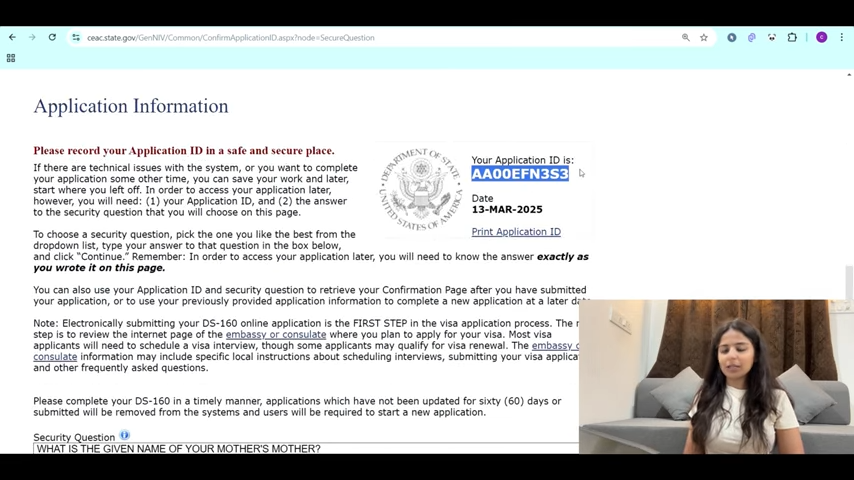
Step 9: Select a security question from the options, and provide an answer you can easily remember.
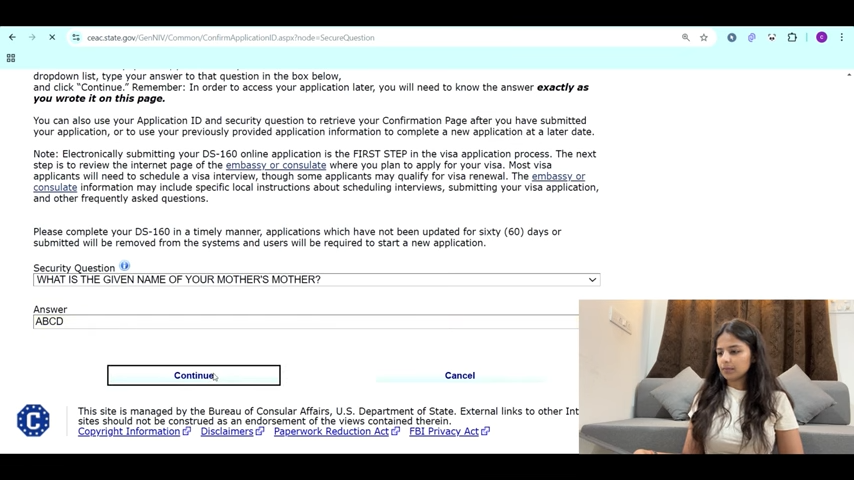
Step 10: Once security question set up is complete and answer, click Continue to proceed.
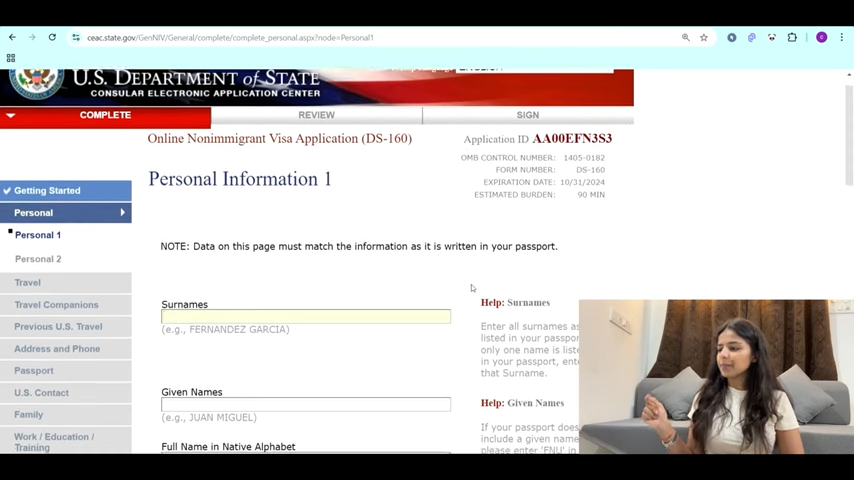
Step 11: Fill in your personal details, including Surname, Given name. Make sure the details exactly match your passport. If you do not have a given name, you may use FNU (First Name Unknown), as shown in the image.
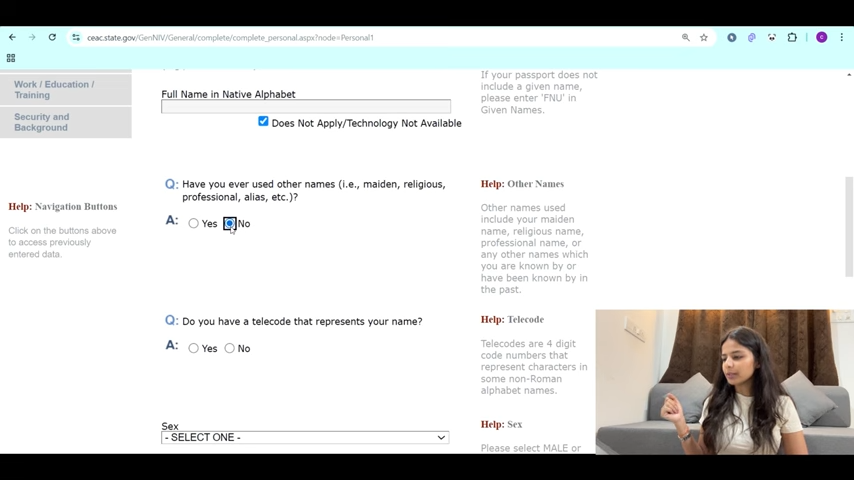
Step 12: Answer the additional questions regarding your Visa Application, such as “Have your used other names“, or “Do you have a telecode that represents your name“, by selecting Yes or No as appropriate.
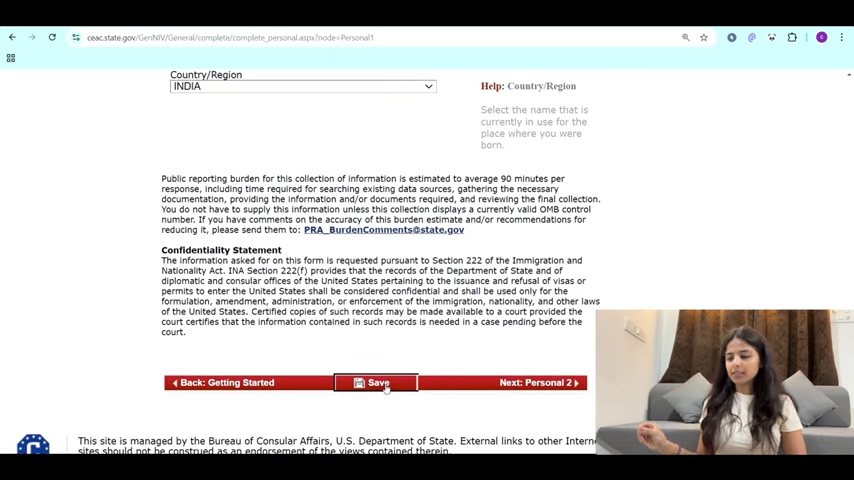
Step 13: After completing all required details, scroll to the bottom and click Save, and move to the Next Personal information 2 page.
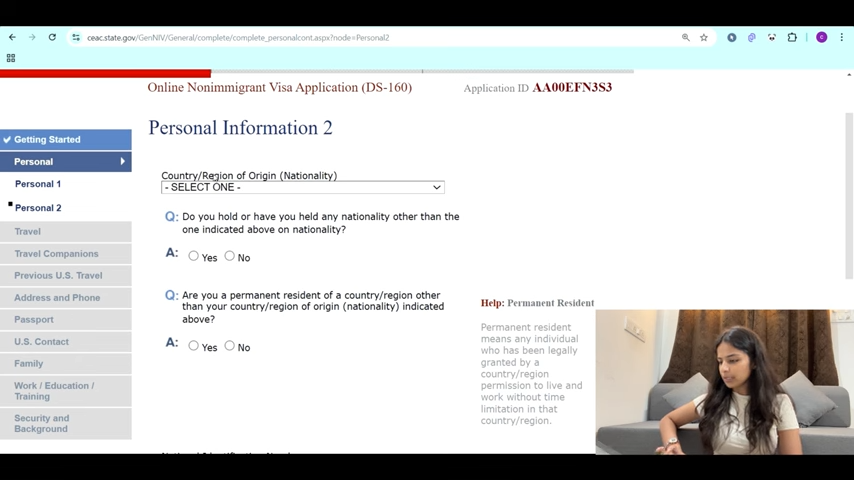
Step 14: On the next personal infromation page, you will be asked to provide details such as Nationality, National Identification Number (PAN Number or Aadhaar), and other related information.
Step 15: After filling in these details click Next: Travel option.
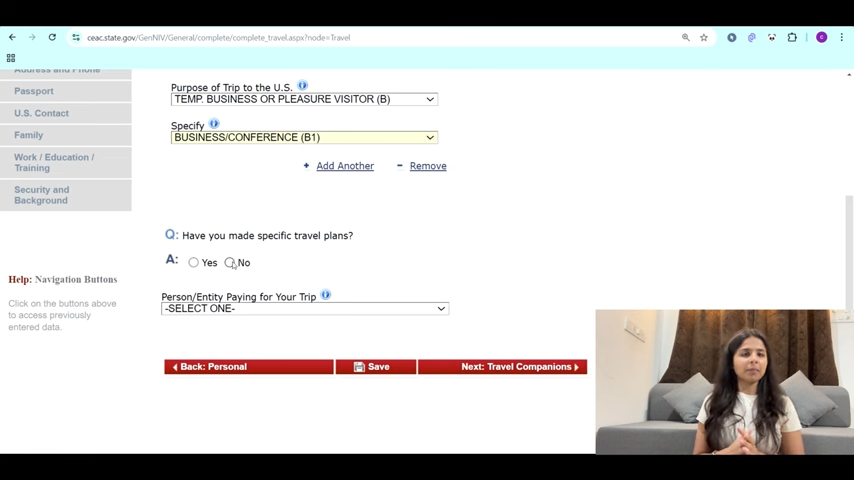
Step 16: Provide your travel details including your visiting purpose to the U.S. For example you may select Businees (B-1), Tourism (B-2) or any other category as per your need. Save your responses.
Step 17: After completing the form, pay the visa application fee, (varies by visa type). Download and keep the payment receipt, as it will be it required later.
Step 18: Create an account on the official US Embassy website.
Step 19: Schedule an appointment for the visa interview.
Step 20: Attend the interview. The consular officer will decide whether you qualify for the visa. Processing time vary and approval is not guaranteed.
Step 21: If your Visa application is approved, you will received your passport with the visa stamp. The will be collect it from the embassy or consulate, or have it delivered to your address via courier, an additional fee may apply.
Note: Always keep your application ID safe for further use.
How to Track you Visa Application?
Once you successfully submit your application and complete your visa interview, you will be provided a tracking number or reference to stay updates on the visa status of your application. For an easy US Visa tracking, visit the website.
Hope you like our US visa guide if you need any help regarding travel planning you can use our Travel Assistant AI PuNIMA to get complete details & you can book flights & hotel tickets from our plane pockets website also .

